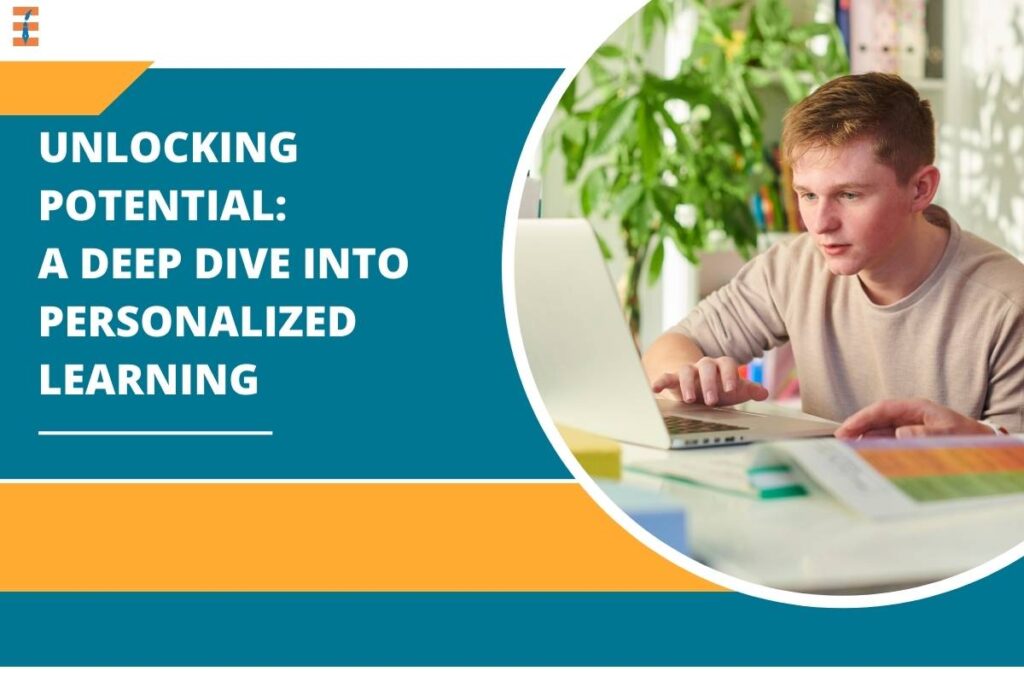In the dynamic landscape of education, one size doesn’t fit all. Recognizing this, educators and institutions are embracing a revolutionary approach known as personalized learning. This transformative paradigm shifts from the conventional assembly-line model to a tailored educational experience, acknowledging the unique needs, pace, and preferences of each learner.
Understanding Personalized Learning
Definition: Personalized learning is an educational approach that tailors instruction to meet the individual needs, interests, and pace of each learner. It moves away from the traditional one-size-fits-all model and leverages technology, data, and flexible teaching methods.
Key Components
1. Tailored Content
- Explanation: Personal learning curates educational content based on a student’s proficiency level, learning style, and interests. The aim is to provide relevant and engaging material that resonates with each learner.
- Example: In a mathematics class, instead of having the entire class follow the same curriculum, personalized learning platforms assess each student’s grasp of foundational concepts. Advanced students may explore more complex topics, while those needing reinforcement focus on building a solid understanding of the basics.
- Application: Adaptive learning software, like DreamBox, assesses a student’s mathematical proficiency and adjusts the difficulty of problems in real-time. This ensures that each student is appropriately challenged and supported.
2. Flexible Pacing
- Explanation: Unlike traditional classrooms with a fixed pace, personal learning allows students to progress at their own speed. It recognizes that individuals learn and master concepts at different rates.

- Example: In a traditional setting, a class might spend a set number of weeks on a specific unit. With flexible pacing, students who grasp the material quickly can move ahead, while those who need more time receive additional support without feeling rushed.
- Application: Competency-based education models, such as Summit Learning, enable students to advance to the next level once they have demonstrated mastery of a concept, ensuring a deep understanding before moving forward.
3. Varied Learning Modalities
- Explanation: Personalized learning embraces diverse teaching methods to accommodate various learning preferences. It recognizes that students have unique strengths and responds to multiple modes of instruction.
- Example: A science lesson on photosynthesis might include a virtual simulation for visual learners, a hands-on experiment for kinesthetic learners, and a group discussion for auditory learners.
- Application: Teachers use a range of resources and activities, such as virtual labs, interactive presentations, and collaborative projects, to cater to different learning styles within a single classroom.
4. Continuous Assessment
- Explanation: Regular and adaptive assessments are integrated into personal learning to provide ongoing feedback. This allows educators to gauge a student’s progress and adjust their teaching strategies accordingly.

- Example: Instead of relying solely on periodic exams, personalized learning platforms continually assess a student’s performance. If a student is struggling with a particular concept, the platform might offer additional resources or targeted practice exercises.
- Application: Data-driven insights from assessments inform teachers about individual strengths and challenges, enabling them to provide timely interventions and differentiated support.
Examples of Personalized Learning in Action
1. Adaptive Learning Platforms
- Explanation: Educational technology platforms use algorithms to assess a student’s performance and deliver content tailored to their specific needs. These platforms adapt in real-time to provide personalized challenges and support.
- Example: Khan Academy’s adaptive learning system assesses a student’s proficiency in math and adjusts the difficulty of subsequent problems. If a student struggles with a concept, the platform offers instructional videos and additional practice.
- Application: Adaptive learning is widely used in subjects like mathematics and language learning, ensuring that each student progresses at their own pace.
2. Project-Based Learning
- Explanation: Students engage in projects that align with their interests, allowing them to explore and apply knowledge in a meaningful context. This approach fosters critical thinking, collaboration, and creativity.
- Example: A history project might involve researching and presenting on a specific era, integrating elements of literature, geography, and technology.
- Application: Project-based learning provides students with opportunities to delve deeply into subjects, promoting a holistic understanding and application of knowledge.
3. Student Choice Boards
- Explanation: Students are presented with a menu of learning activities and have the autonomy to choose tasks that align with their preferences and learning style.

- Example: A literature student might choose to analyze a classic novel, create a multimedia presentation, or write a creative story.
- Application: Student choice boards promote autonomy and cater to diverse learning preferences, ensuring that students are motivated and engaged in their educational journey.
Applications across Educational Levels
1. Elementary Education
- Explanation: Personalized learning supports young learners in building foundational skills at their own pace, creating a positive and personalized introduction to education.
- Example: In a language arts class, it might involve interactive games for early readers and tailored exercises for developing literacy skills.
- Application: Early intervention through personal learning ensures that students develop a strong academic foundation.
2. Middle School
- Explanation: In the critical transition years, personalized learning helps students explore their interests and build essential skills for high school.
- Example: A science curriculum might allow students to choose from a variety of projects, encouraging them to pursue areas of personal interest.
- Application: Middle school students, through personalized learning, develop a sense of agency and responsibility for their own learning.
3. High School
- Explanation: Personalized learning in high school becomes preparation for college and career readiness, allowing students to delve deeper into subjects aligned with their aspirations.
- Example: Students interested in computer science might engage in coding projects, while those passionate about literature explore advanced literary analysis.
- Application: High school students, with personal learning, gain a sense of ownership over their education and are better prepared for diverse post-secondary paths.
As we explore personalized learning, it’s clear that this way of learning could change how we see education. It’s like making education for everyone, adjusting and growing with each student. In the next parts, we’ll look closer at the good parts, the tough parts, and where personalized learning might go next. It’s exciting to see how this way of learning can include everyone, adapt to each person, and give power to each student’s journey. Stick around to find out more about why personal learning is a big deal for the future of education.










